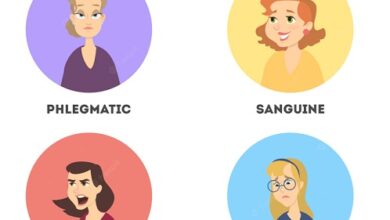Reticular formation with functions anatomy and diseases
The reticular formation is a collection of neurons that extend from the spinal cord to the thalamus. This structure allows the body to wake up after prolonged sleep and stay alert during the day.
The complex network of neurons of the reticular formation participates in the maintenance of excitation and consciousness (sleep-wake cycle). In addition, it intervenes in the filtering of irrelevant stimuli, so that we can focus on the relevant ones.
It is formed by more than 100 small neural networks that spread unevenly through the brain stem and spinal cord. Its nuclei influence cardiovascular control and motor control, as well as pain modulation, sleep and habituation.
For the proper performance of the named functions, this structure maintains connections with the medulla, midbrain, pons and diencephalon. On the other hand, it connects directly or indirectly with all levels of the nervous system. Your specific position allows you to participate in these essential functions.
Usually, when some kind of pathology or damage occurs in the reticular formation, drowsiness or coma occurs. The main diseases associated with the reticular formation are characterized by problems in the level of alertness or muscle control. For example, narcolepsy, Parkinson’s, schizophrenia, sleep disorders or attention deficit hyperactivity disorder.
Where is the reticular formation?
It is very difficult to visualize the exact location of the reticular formation as these are groups of neurons found in different parts of the brainstem and spinal cord. Furthermore, locating it is even more complicated by its numerous connections with various areas of the brain.
It is found in different areas such as:
Spinal cord
At this point, the cells are not in a group, but are inside the spinal cord. Specifically in the intermediate zone of the spinal gray matter. In this area, there are sectors called “reticulospinales”, which are in the anterior medulla and the lateral medulla.
Most of these sectors transmit stimuli downwards (from the medulla to the rest of the body), although some also do so upwards (from the organism to the brainstem nuclei).
the brainstem
In the brainstem, it is the main site where the reticular formation is located. Studies have shown that their organization is not random. That is, according to their connections or functions, they have characteristics that allow it to be divided into three groups of reticular nuclei that are explained below.
the hypothalamus
There appears to be an area of reticular forming neurons called the area uncertain. This occurs between the subthalamic nucleus and the thalamus and has numerous connections with the reticular nuclei of the brainstem. (Latarjet and Ruiz Liard, 2012).
Cores or parts of the reticular formation
It has different nuclei of neurons, according to their functions, connections and structures. Three are distinguished:
Medium group of cores
Also called raphe nuclei, they are located in the medial column of the brainstem. It is the main site where serotonin is synthesized and plays a key role in mood regulation.
In turn, they can be divided into the dark raphe nucleus and the large raphe nucleus.
main group
They are divided according to their structure into medial or gigantocellular nuclei (of large cells) and posterolateral nuclei (consisting of small cell groups called parvocellulars).
side group of nuclei
They are integrated into the reticular formation because they have a very peculiar structure. These are the reticular, lateral and paramedian nuclei at the level of the medulla and the reticular nucleus of the pontic tegmentum.
The side group of the reticular formation has connections primarily with the cerebellum.
Reticular formation and neurotransmitters
Different groups of cells that produce neurotransmitters reside in the reticular formation. These cells (neurons) have many connections throughout the central nervous system. In addition, they are involved in regulating the activity of the entire brain.
One of the most important areas of dopamine production is the ventral tegmental area and substantia nigra, which is in the reticular formation. While the locus coeruleus is the main area that causes noradrenergic neurons (which release and capture noradrenaline and adrenaline).
As for serotonin, the main nucleus that secretes it is the raphe nucleus. It is located in the midline of the brainstem, in the reticular formation.
On the other hand, acetylcholine is produced in the midbrain of the reticular formation, specifically in the pedunculopontin and laterodorsal tegmental nuclei.
These neurotransmitters are produced in these areas and then transmitted to the central nervous system to regulate sensory perception, motor activity and other behaviors.
Functions
The reticular formation has a wide variety of basic functions since, from a phylogenetic point of view, it is one of the oldest areas of the brain. Modulates the level of consciousness, sleep, pain, muscle control, etc.
Their functions are explained in more detail below:
Alert status regulation
The reticular formation greatly influences arousal and consciousness. When we sleep, the level of consciousness is suppressed.
The reticular formation receives a multitude of fibers from the sensory tracts and sends these signals to the cerebral cortex. In this way, it allows us to be awake. Greater activity of the reticular formation translates into a more intense state of alert.
This function is performed through the reticular activating system (RAS), also known as the upward excitation system. It plays an important role in attention and motivation. In this system, thoughts, internal sensations and external influences converge.
Information is transmitted through neurotransmitters such as acetylcholine and norepinephrine.
Damage to the reticular activating system can seriously impair consciousness. Severe damage to this area can lead to a coma or persistent vegetative state.
postural control
There are downward projections from the reticular formation to certain motor neurons. This can facilitate or inhibit muscle movements. The main fibers responsible for motor control are mainly in the reticulospinal tract.
In addition, the reticular formation transmits visual, auditory, and vestibular signals to the cerebellum for integration into motor coordination.
This is essential for maintaining balance and posture. For example, it helps us lift stereotyped movements such as walking and controlling muscle tone.
Facial Motion Control
The reticular formation makes circuits with the motor nuclei of the cranial nerves. In this way, they modulate the movements of the face and head.
This area contributes to orofacial motor responses by coordinating the activity of the trigeminal, facial, and hypoglossal nerves. As a result, it allows for correct movements of the jaw, lips and tongue, for chewing and eating.
On the other hand, this structure also controls the functioning of the facial muscles that facilitate emotional expressions. So we can make the right movements to express emotions like laughing or crying.
As it is found bilaterally in the brain, it provides motor control on both sides of the face symmetrically. It also allows for the coordination of eye movements.
Regulation of autonomous functions
The reticular formation exerts motor control of certain autonomic functions. For example, the functions of Organs visceral organs.
Neurons of the reticular formation contribute to motor activity related to the vagus nerve. Thanks to this activity, the proper functioning of the gastrointestinal system, respiratory system and cardiovascular functions is achieved.
Therefore, the reticular formation is involved in swallowing or vomiting. Like sneezing, coughing or breathing. While, on the cardiovascular level, the reticular formation would maintain an ideal blood pressure.
pain modulation
Through the reticular formation, pain signals are sent from the lower part of the body to the cerebral cortex.
It is also the origin of the descending pathways of analgesia. Nerve fibers in this area act on the spinal cord to block pain signals reaching the brain.
This is important because it allows us to relieve pain in certain situations, for example during a very stressful or traumatic situation (gate theory). It has been seen that pain is suppressed if certain drugs are injected into these pathways or destroyed.
Room
It’s a process by which the brain learns to ignore repetitive stimuli, which it considers irrelevant at the time. Maintaining sensitivity to stimuli of interest. Habituation is achieved through the aforementioned reticular activating system (SAR).
Impact on the endocrine system
The reticular formation indirectly regulates the endocrine nervous system, as it acts on the hypothalamus for hormone release. This influences somatic modulation and visceral sensations. This is fundamental in the regulation of pain perception.
Diseases of the reticular formation
As the reticular formation is located at the back of the brain, it appears to be more vulnerable to any injury or damage. Normally, when there is an affectation of the reticular formation, the patient goes into a coma. If the lesion is bilateral and massive, it can lead to death.
Although also the reticular formation can be affected by viruses, tumors, hernias, metabolic disorders, inflammation, poisoning, etc.
The most common symptoms when there are problems in the reticular formation are drowsiness, stupor, changes in breathing and heart rate.
Problems with sleep, wakefulness and level of consciousness
The reticular activating system (RAS) of the reticular formation is important in a person’s level of alertness or arousal. It seems that with age there is a general decrease in the activity of this system.
Therefore, it seems that when there is a malfunction in the reticular formation, it is possible that problems occur in the sleep-wake cycles, as well as in the level of consciousness.
For example, the reticular activating system sends signals to activate or block different areas of the cerebral cortex, depending on whether new stimuli or familiar stimuli appear. It is important to know which elements to attend to and which to ignore.
Thus, some models that try to explain the origin of attention deficit hyperactivity disorder claim that this system could be insufficiently developed in these patients.
Problems in psychiatric illnesses
García-Rill (1997) states that there may be failures in the reticular activation system in neurological and psychiatric diseases, such as Parkinson’s disease, schizophrenia, post-traumatic stress disorder, REM sleep disorder and narcolepsy.
It was found in post mortem studies performed on patients suffering from Parkinson’s disease, a degeneration in the pontine peduncle nucleus.
This area consists of a cluster of neurons that form the reticular formation. These are neurons that have many connections with structures involved in movement, such as the basal ganglia.
In Parkinson’s disease, there appears to be a significant decrease in the number of neurons that make up the locus coeruleus. This causes a disinhibition of the pontine peduncle nucleus, which also occurs in post-traumatic stress and REM sleep disorders.
Therefore, there are authors who propose deep brain stimulation of the pedunculoponic nucleus of the reticular formation to treat Parkinson’s disease.
As for schizophrenia, a significant increase of neurons in the pedunculopontinal nucleus was observed in some patients.
Regarding narcolepsy, there is excessive daytime sleepiness, which may be associated with damage to the nuclei of the reticular formation.
cataplexy
On the other hand, cataplexy or cataplexy, which are sudden episodes of loss of muscle tone when awake, is linked to changes in the cells of the reticular formation. Specifically in the cells of the magnocellular nucleus, which regulate muscle relaxation in REM sleep.
chronic fatigue syndrome
Furthermore, abnormal activity in the reticular formation has been found in some studies in patients with chronic fatigue syndrome.




